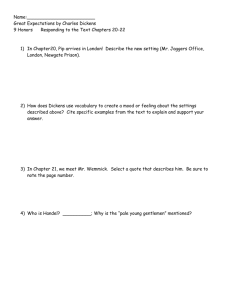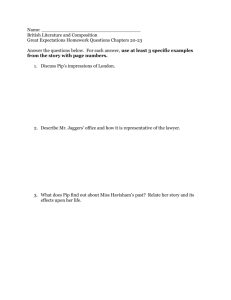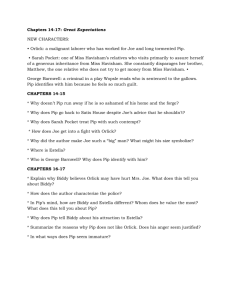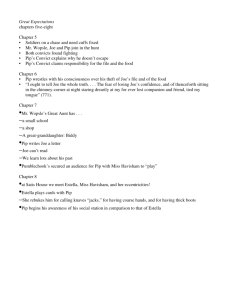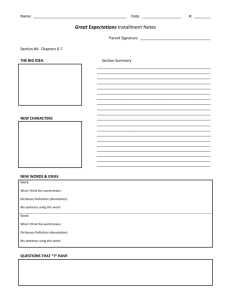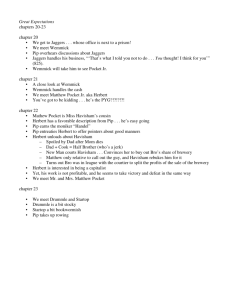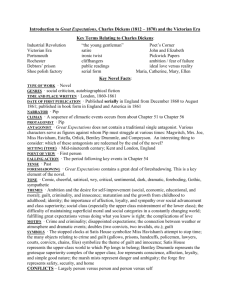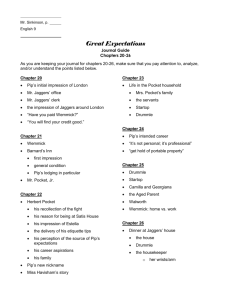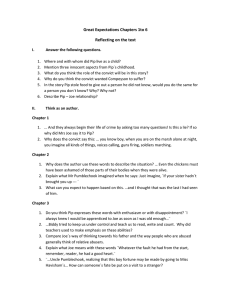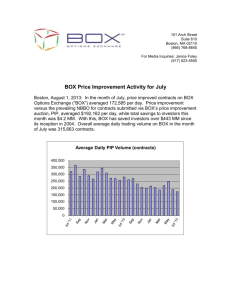File
advertisement
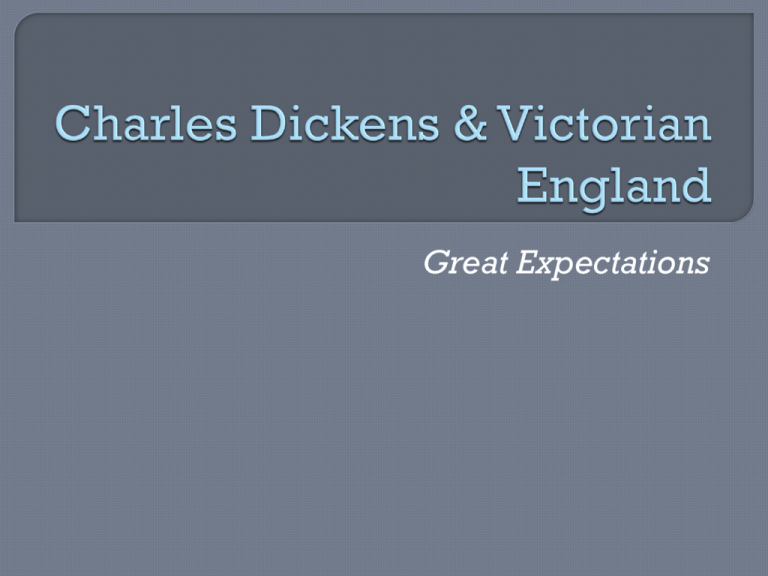
Great Expectations Salvation Army founded by William Booth in London to minister to the lower classes Prime Ministers in the 1860s were primarily of the Liberal party (which advocated classical liberalism or laissezfaire). • Laissez-Faire: the economy works best if private industry is not regulated and markets are free Emphasized emotion High view of nature and those close to nature (for example, children and native Americans) Realism emphasized an accurate portrayal of the subject Landscapes, still lifes, and depictions of every day life were popular in painting Replaced the emotion of Romaticism with more realistic subjects Realism was prevalent in art and literature in the mid- to late nineteenth century Painted by French artist Gustave Courbet in 1850 Depicts the funeral of Courbet’s great uncle Painted by French painter Jean-François Millet in 1857 Depicts peasant women gleaning after a harvest First major work by Dutch artist Vincent van Gogh (1885) Not realist in style, but content b. 1812 in Portsmouth d. 1870. Buried in Westminster Abbey Wrote novels, short stories, plays, and nonfiction Very popular during his time Created characters from his own experiences and observations while walking around London Came from a poor family Father sent to debtor's prison Worked in a factory as a child Didn’t see his family often He expressed feelings of humiliation, loneliness, and rejection in the children of his novels Chapters of the novel were published in monthly magazines Allowed authors to refine the novel based on popular taste Chapters generally ended with a cliffhanger The Pickwick Papers (1836-7) The Adventures of Oliver Twist (1837-9) Nicholas Nickleby (1838-9) A Christmas Carol (1843) David Copperfield (1849-50) Bleak House (1852-1853) Hard Times (1854) A Tale of Two Cities (1859) Great Expectations (1860-1) Published in weekly serial All the Year Round from December 1860 to August 1861 Written in first person from the view of the orphan Pip Takes place in the mid-nineteenth century in London and southeast England Social Class Ambition & Self Improvement Crime, Guilt, & Innocence Loyalty & Affection Great Expectations Time: Satis House & Clocks Guilt & Innocence: gallows, prisons, handcuffs, policemen, lawyers, courts, convicts, chains, and files Uncertainty: marsh mists and fog Villains Victims Vindicators Mrs. Joe Pip Joe Gargery Compeyson Magwitch Mr. Wemmick Miss Havisham Herbert Biddy Dolge Orlick Bentley Drummle Narrator: Pip Point of View: First Person (Pip) Protagonist: Pip Antagonists: (change throughout the novel) Magwitch, Mrs. Joe, Miss Havisham, Estella, Orlick, Bentley Drummle, and Compeyson Back: • • • • • Relation to Pip Main facts Personality Important Quotes Add Information as you learn more about the character Front: Name Sketch (based on descriptiontry to visualize the character) Important Characters: 1. Philip Pirrup (Pip) 2. Estella 3. Miss Havisham 4. Joe Gargery 5. Mrs. Joe Gargery 6. Biddy 7. Uncle Pumblechook 8. Herbert Pocket (the pale young gentleman) 9. Mr. Jaggers 10. Wemmick 11. Dolge Orlick 12. The Convict (Pip’s Convict)
